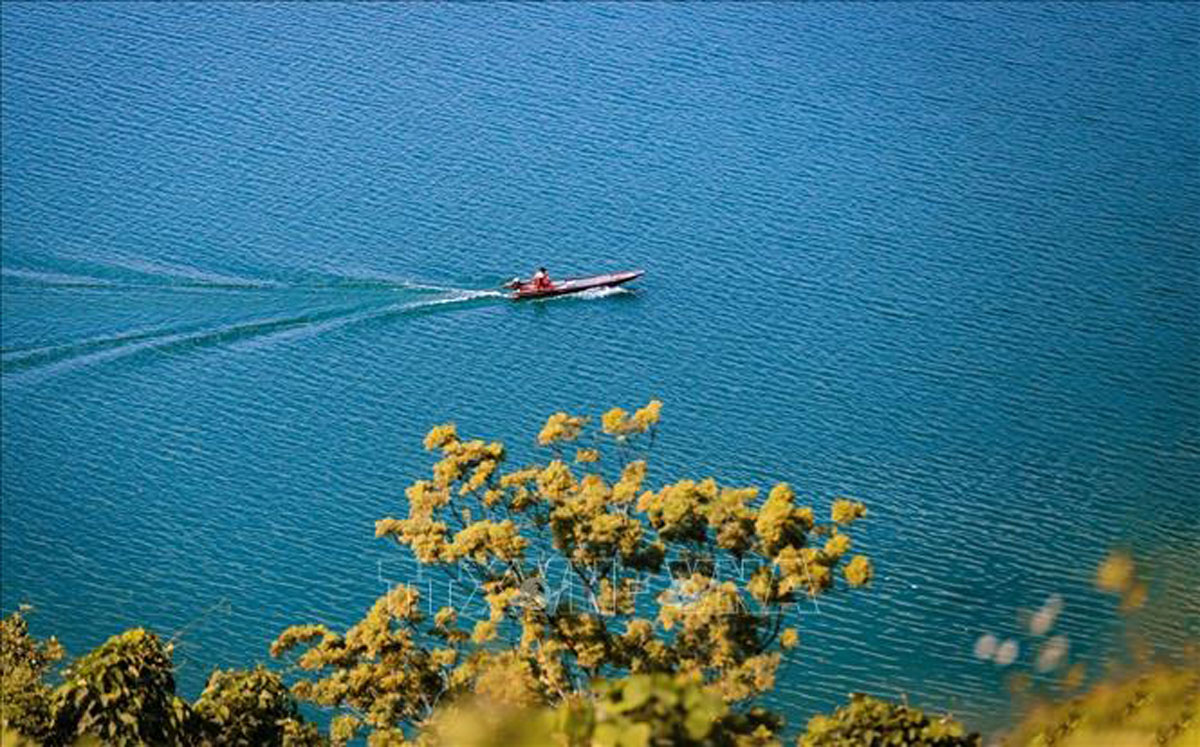The Standing Board of the provincial Party Committee has issued a resolution on the development of the Hoa Binh Lake Tourist Area, aiming to turn it into a national site. To date, the area has satisfied three out of the five criteria set for a national tourist site.
Afternoon over Hoa Binh Lake.
Mobilising
resources
Under the planning scheme by 2035, approved by
the Prime Minister, the area will be a key national tourist site in the
northern midland and mountainous region, with special cultural traits,
ecosystem, and tourism products.
Covering 52,200 hectares in Da Bac, Tan Lac, Cao
Phong and Mai Chau districts and Hoa Binh city, the lake is dubbed "Ha Long Bay
on Land”, with various tourist attractions and historical, cultural and
spiritual relic sites, such as Thac Bo Temple, Ngoi Hoa Bay, and Coconut
Island, along with hamlets of Muong and Dao ethnic groups.
Hoa Binh province has mobilised resources for
infrastructure, especially in transport, in the area. Notably, the Hoa Lac –
Hoa Binh Expressway connecting Thang Long avenue with Hoa Binh city has been
put into use, helping shorten the travel time between Hanoi and the province.
The locality is working to meet the remaining
criteria regarding infrastructure and high-quality services; and security,
social order and safety, and environmental protection.
Resolution
put in place
Implementing the resolution, the province has
invested concertedly in infrastructure, particularly transport infrastructure,
and attracted many large-scale projects worth hundreds of billions of Vietnam
dong.
Apart from spiritual tourism, it has stepped up
community tourism in hamlets like Ngoi (Suoi Hoa commune, Tan Lac district), Da
Bia (Tien Phong commune, Da Bac district), and Ke (Hien Luong commune, Da Bac
district).
Ke hamlet is offering diverse tourism products,
including kayak ride and tours to fish farms and temples. From Ke, visitors can
pedal their way or ride a motorbike to its neighbouring hamlets like Sung (20
km away), and Da Bia (30 km), or take a boat to attractions in Mai Chau
district.
Currently, there are more than 100 lodging facilities
in the area, notably Mai Chau hideaway and Ba Khan Village resort, and about
300 vehicles.
The Hoa Binh Lake area has so far attracted 16
tourism and service projects worth some 3.3 trillion VND (129.62 million USD).
It has one community tourism site rated four stars, and another rated three
stars under the "One Commune-One Product” programme.
Vice Chairman of the provincial People’s
Committee Nguyen Van Toan said the area has played an important role in luring
both domestic and foreign visitors to Hoa Binh, noting it is expected to
welcome over 1 million holidaymakers by 2025.



